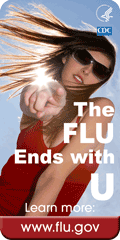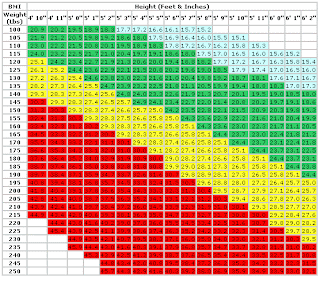Screen everyone. When it comes to violence and trauma - screen everyone. One of your classmates used the term 'exuberant' screening -
be exuberant. Physicians err on the side of caution in screening when the outcome of missing the diagnosis has a significant impact. This is true for a quiet tender abdomen in a patient with a fever - thus we look for appendicitis so as to not miss a ruptured appy that will result in life long abdominal pain. It is equally true for child maltreatment and intimate partner violence.
Screen everyone.
Universal screening is the best way to do this. Universal screening means telling
everyone that we do this with
everyone. By creating your clinical habit to ask everyone, you eliminate the challenge of deciding the if, when and who of screening about unhealthy relationships, abusive situations or being abusive to others.
How do you actually ask? Whether of a child with suspicion injuries or upon a first visit with a woman or man consider stating "We ask everyone these questions so that we make sure that people who are being harmed know that we are here to help." "There is a lot of abuse out there and we are mandated reporters." To a child (age dependent) ' You're here because you are hurt - we need to check you head to toe to make sure everything's ok.'
Won't I offend? We (should) ask everyone about use of drugs and alcohol; sexual habits including safe sex; status of HIV screening as well as history of trauma. The concern about offending a patient needs to be on the back burner. If a patient states it isn't an issue to them - it may not be (or it may be that they do not yet feel safe enough with you to divulge this.) If you inform the patient that you need to ask everyone (it's your job!) - then if it isn't true for them, you move on. If parents of a child with a suspicious injury get evaluated because we do it universally as our pledge to keep children safe - those for whom it was unfounded will be unfounded. But for others, we will have kept a child safe. Universal screening means seeing past personal bias of who seems to be at risk (certain groups) versus who really is at risk (every economic class and ethnicity.) - everyone.
How and where do I do this in the medical history? Here's some options -
1) Under Health Promotion issues - Stress screening [e.g. (
On a scale of 1 - super mellow to 10 - ready to jump out of my skin - How stressful is work? How stressful is home? When stress becomes 10 or higher - what do you do to take care of yourself?] Has there every been a time when something traumatic happened to you? when something bad happened? What was that? How are you doing now? Has there every been a time when someone forced you to have sex? When they hurt you (hit/kick/punched)? When they kept you away from friends or family?)
2) Include IPV screening as a dedicated part of the history on health maintenance (including wearing seat belts; alcohol; self breast/testicular exams)
"There is a lot of relationship violence that we see (as well as the health effects from it.)" "Have you ever been in a violent or abusive relationship?"
"When you get upset - how do you handle it? Have you ever felt that you 'lost it' when you got angry? Does this worry or concern you? Do you wish you could deal with frustration better?"
3)Include in the surgical history (
Have you ever broken anything and how? Ever hospitalized? What for?)
4)The sexual history - "
When was your earliest sexual experience? Did anyone ever force themselves on you? etc."
5) A sleep history -
"Do you have good quality sleep? Do you have nightmares or bad dreams?"
6)In the mental health history - "
There is a lot of violence and trauma in our world and it influences how people live even after it happened. Was there ever a time when something bad happened to you? How did you handle that?"
There is also some information in the literature that people who present with problems such as chronic pain, GI disorders, functional gyn problems; sexual dysfunction; aversion to dentists/oral health; and chronic headaches should be screened.
Here's a listing of some of our wonderful local Drexel collaborators and experts
DUCOM
At
Women's Health Education Program
Candace Robertson, MPH
Healthy relationship education for teens and IPV health screening
Ana Núñez, MD IPV health education screening;
Philadelphia Ujima - culturally and health literacy appropriate health outreach
Jill Foster, MD Ped/Adol HIV/AIDs Center;
St Christopher's Hospital for Children; expertise in the intersection of intimate violence and adolescent sexual health, child maltreatment, sexual health and LGBT youth
Ted Corbin, MD - ED Physician Violence Intervention Program
"Healing Hurt People"; expertise in outreach to young men with trauma
Ralph Riviello, MD - ED Physician, Sexual Assault Treatment Center; expertise in helping victims of rape/assault
Susan McCleer, MD, Psychiatry forensic psychiatry
School of Public Health violence prevention collaborators
Sandy Bloom, MD -
Creating sanctuary: toward the evolution of sane societies and more resources
here
John Rich, MD, MPH -
Wrong Place; Wrong Time
DU collaborators
Julie Mostov, PhD International Violence and Women's Advocacy
Maria McColgan, MD, MEd, FAAP Child Protection Program, St Chris (Seminar Series speaker 2010!)
References regarding New Jersey maltreatment case
IPV and Curricular Opportunities to Learn About It
Update on Intimate Partner Violence and Medical EducationThe Drexel University College of Medicine Women’s Health Education Program is a model for training medical students to screen for and respond to intimate partner violence.
Ana E. Nunez, MD, Candace J. Robertson, MPH, and Jill A. Foster, MD










 There are flu shots all over, if you have a doctor, call your doctor to ask abour flu shots. You may also be able to get one at work or school. They have flu shots in grocery stores and pharmacies as well!
There are flu shots all over, if you have a doctor, call your doctor to ask abour flu shots. You may also be able to get one at work or school. They have flu shots in grocery stores and pharmacies as well!



























